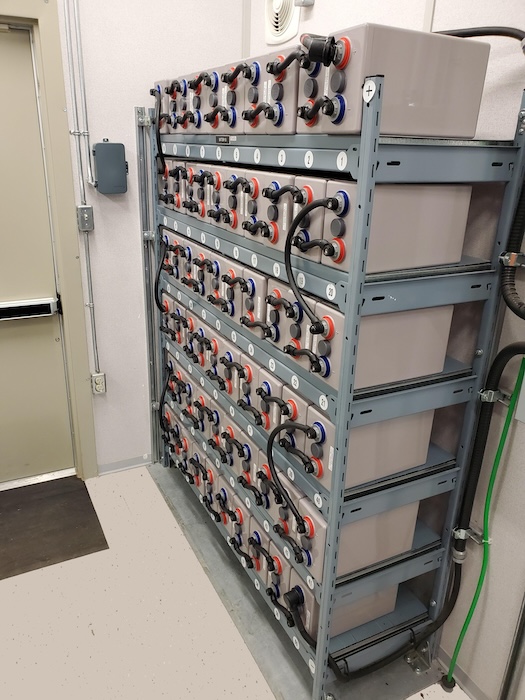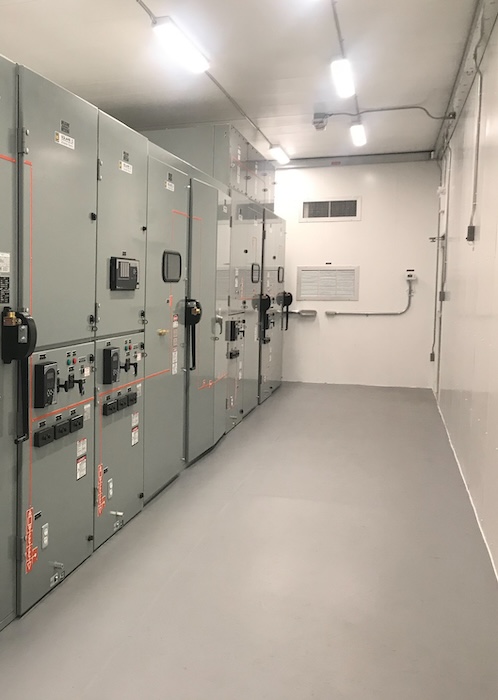
Choosing the right switchgear batteries
April 17, 2024
By Dan Czosnek
Consulting engineers play a critical role.
Switchgear comprises electrical disconnect switches and circuit breakers, along with monitoring, communications, metering, relays and control. There are low-voltage circuit breakers for numerous incoming or outgoing power feeds and main circuit breakers for on/off control and connection to multiple power sources. Large systems normally involve a high-voltage transformer, which feeds through high-voltage circuit breakers and disconnect switches to connect to high-voltage power transmission lines.
In power generation facilities, such as wind and solar farms, that power is being fed onto the transmission lines. For consumers and businesses, that power is being distributed within residential buildings, offices and hospitals, while for industrial buildings it is used to operate heavy manufacturing equipment.
All along the way, these circuit breakers protect against a fault, overload or short circuit. If there was a major equipment fault, upstream feeder breakers would need to open instantly to prevent serious damage and potential fire within that equipment. If a major fault existed within a power generating facility and was imposed on high-voltage power transmission lines, the situation could get very expensive if the fault was not cleared instantly.
Smaller switchgear systems are used for general industry, hospitals and other buildings. Such a system is not any less important, as a fault within could result in burning up a multi-million-dollar main power transformer or a utility/grid transformer. Not only could that lead to very expensive repairs, but it could also mean extended downtime without any power.
Even small switchgear systems can prevent expensive repairs and extended downtime.
Batteries for backup
Switchgear operation and control is primarily powered by a battery backup system; therefore, there is no protection if the battery fails.
In large systems, the batteries are often redundant. For smaller systems, however, including those used by heavy industry, hospitals and large buildings, they are most commonly single battery strings, making their reliability even more critical for safe operation. Possible battery types include nickel-cadmium (NiCd), lead-acid (LA), valve-regulated lead-acid gel (VRLA-GEL) and valve-regulated lead-acid absorbed glass mat (VRLA-AGM).
These various types have their own benefits and drawbacks.
NiCd
Nickel-cadmium batteries have been around for more than 100 years. They typically comprise steel pocket-plates containing the active materials cadmium and nickel in a strong base solution of potassium hydroxide, which protects the plates against corrosion. They are perhaps the strongest, most durable and most reliable type of battery, but are relatively expensive and require some maintenance (although low-maintenance versions are available).
LA
Lead-acid batteries have been around for hundreds of years. They comprise lead plates pasted with lead oxide and sponge lead as the active materials in a strong solution of sulphuric acid. They are quite durable and less expensive than NiCd, but require maintenance, plus corrosion can be an issue.
VRLA-GEL
Valve-regulated GEL batteries were first designed in 1960. They are similar to common lead-acid batteries, but use a silica (sand) gelling agent to thicken the acid solution and a one-way valve to let out gas pressure and prevent entry of outside atmosphere (i.e. keeping oxygen molecules out of the battery, so as not to depolarize the negative plates). Advanced types include armoured tubular plates, special alloys, carbon-boost technology and other acids, such as phosphoric. VRLA-GEL batteries can be quite durable, even superior to common lead-acid batteries, with a minimal price premium, and require very little maintenance.
VRLA-AGM
Valve-regulated AGM batteries were developed around 1975. They are similar to the design of VRLA-GEL batteries, but with a very minimal amount of acid absorbed into a glass mat separator between the plates. Early AGM batteries were marketed as sealed and maintenance-free; sales grew exponentially, due to issues with standard lead-acid batteries (which were messy and high-maintenance), but early AGM products had a lot of problems. Now a mature product category, they may incorporate special separators and alloys, but they are still likely the most at risk from various possible failure modes and will require extra monitoring and checking.

Switchgear specification is key to successful operations for wind farms. Photo courtesy Advanced Battery Systems.
The right product for the project
Consulting engineers play an important role in the battery selection process by determining which type is best for a given project, based both on common sense and on the client’s needs. It is also important to specify a plan of inspection and testing for the battery and then ensure that plan will get implemented.
For a hospital, by way of example, the best option might be a high-quality VRLA-GEL battery, as there are not likely going to be maintenance personnel with significant battery knowledge at the facility. It would be catastrophic for a hospital to be left with no power because of a battery failure.
A wind or solar farm, on the other hand, is generally run by operations and maintenance (O&M) staff, who might not know everything about batteries, but would understand enough to identify a concern and to undertake maintenance and/or testing on all types of batteries.
In large systems, the batteries are often redundant.
Unique installations
Some projects are particularly challenging. The Canadian Armed Forces, for instance, needs temporary, portable bases that can be quickly set up in the Arctic Circle, where they face real difficulties relating to isolation and limited equipment, which can hinder reliance on traditional power sources, switchgear and control. Lithium-ion batteries were considered in the past, but could not provide sufficient energy density and were too complicated to implement.
After two years of consultations, the organization’s prototype project turned to fuel-cell technology as the primary power source, along with dual redundant VRLA-GEL batteries, to operate and control their switchgear. These gel batteries not only feature armoured tubular plates, but are also designed to last for 22-plus years, fitting for such a critical and remote application.
This system is currently in operation and is being evaluated, with future plans set to expand the rollout to between 20 and 30 systems.
Dan Czosnek, EET, is director of engineering and technical sales for Advanced Battery Systems, based in Burlington, Ont. For more information, contact him at dczosnek@advancedbattery.ca.
This article originally appeared in the March/April 2024 issue of Canadian Consulting Engineer.
